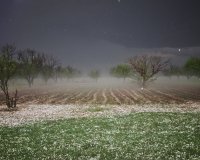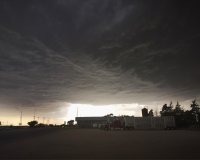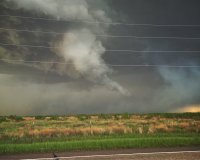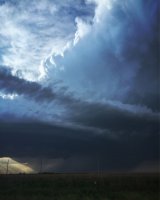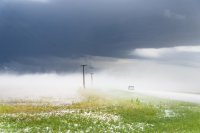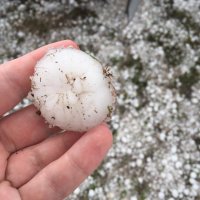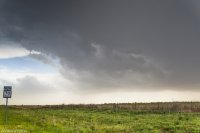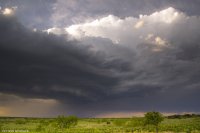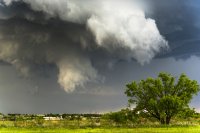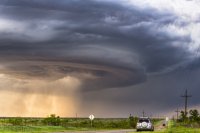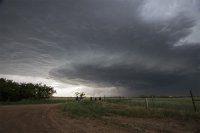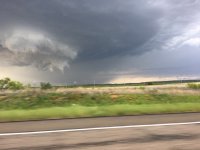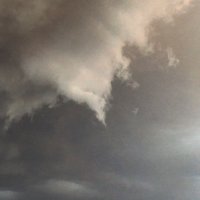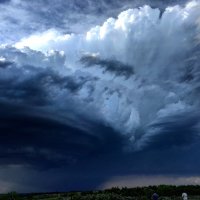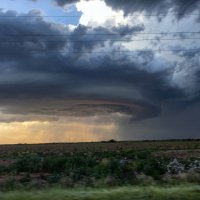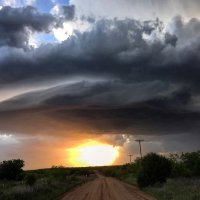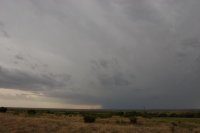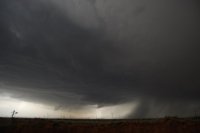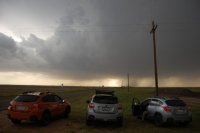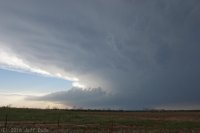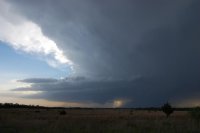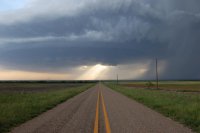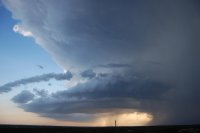Quincy Vagell
EF4
Today was a classic panhandle chase that also brought me into northwest Texas and others into southwest Oklahoma.
Structure was the key word tonight. As with many storms this season, the supercells tracked just could not put down a conclusive tornado, despite displaying rotation and occasional funnel clouds.
I watched two supercells develop and initially stuck with one that passed near Turkey, TX. The storm was really slow to organize and from my vantage point, I did not see anything particularly interesting.
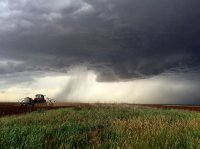
Like other recent chases, I worked my landscape/scenery game to try to grab the most compelling photos, even if the storm wasn't producing anything too exciting.
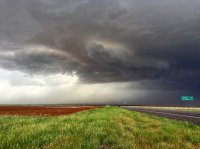
I had the option of either sticking with this storm or dropping south to a developing supercell near Floydada. Considering that the downstream environment for the lead (northeastern-most) cell was somewhat less unstable with increasing CINH, I made a move south toward a familiar location, Floydada.
Despite displaying a hook on radar and showing some modest rotation, this storm also struggled to produce. I had a brief visual on a funnel cloud, but then the storm kind of went flat. I stuck with it for a while and near Matador, I witnessed a few short-lived horizontal funnels. The low clouds were visibly churning and rotating, but probably due to meager moisture and limited low-level shear, they couldn't put down a tornado.
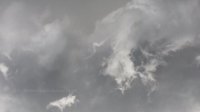
A short time later, as I was pulled over, all of a sudden I saw a vertical plume of dust lift into the sky. Although my eyes tried to play tricks on me, it was just inflow related. The next image is a screengrab from a Periscope broadcast, so the resolution is poor.
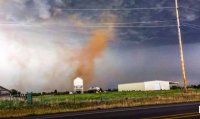
The storm matured and probably reached it's peak intensity a short time later, to the east of Matador. There was a vivid view of a brush fire against the storm with attendant inflow. It was quite a sight and made for one of my favorite pictures so far this chase season:
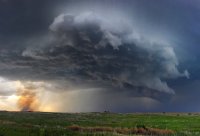
I stayed with the supercell right through sunset and although there were additional glimpses of structure with funnel-like appendages at times, the chase was quickly winding down. I knew today was going to have the potential for a photogenic supercell or two and that's exactly what the setup produced.
I'm sure others can chime in, but the lead supercell that I sighted went on to put on quite a show up near Childress and over into the Oklahoma border.
Structure was the key word tonight. As with many storms this season, the supercells tracked just could not put down a conclusive tornado, despite displaying rotation and occasional funnel clouds.
I watched two supercells develop and initially stuck with one that passed near Turkey, TX. The storm was really slow to organize and from my vantage point, I did not see anything particularly interesting.

Like other recent chases, I worked my landscape/scenery game to try to grab the most compelling photos, even if the storm wasn't producing anything too exciting.

I had the option of either sticking with this storm or dropping south to a developing supercell near Floydada. Considering that the downstream environment for the lead (northeastern-most) cell was somewhat less unstable with increasing CINH, I made a move south toward a familiar location, Floydada.
Despite displaying a hook on radar and showing some modest rotation, this storm also struggled to produce. I had a brief visual on a funnel cloud, but then the storm kind of went flat. I stuck with it for a while and near Matador, I witnessed a few short-lived horizontal funnels. The low clouds were visibly churning and rotating, but probably due to meager moisture and limited low-level shear, they couldn't put down a tornado.

A short time later, as I was pulled over, all of a sudden I saw a vertical plume of dust lift into the sky. Although my eyes tried to play tricks on me, it was just inflow related. The next image is a screengrab from a Periscope broadcast, so the resolution is poor.

The storm matured and probably reached it's peak intensity a short time later, to the east of Matador. There was a vivid view of a brush fire against the storm with attendant inflow. It was quite a sight and made for one of my favorite pictures so far this chase season:

I stayed with the supercell right through sunset and although there were additional glimpses of structure with funnel-like appendages at times, the chase was quickly winding down. I knew today was going to have the potential for a photogenic supercell or two and that's exactly what the setup produced.
I'm sure others can chime in, but the lead supercell that I sighted went on to put on quite a show up near Childress and over into the Oklahoma border.

